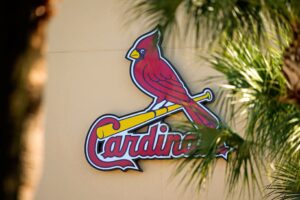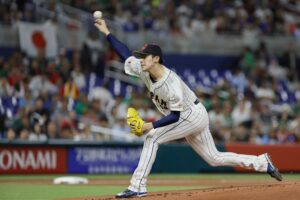The human head is attached to the spinal column via the first cervical vertebra. It is connected to the body by way of the neck, which is made up of muscles, nerves, and blood vessels. The bobblehead head is attached to the body with a spring. The spring makes it so that with the lightest of touches, the head will sway or bobble. Both are complicated and simplistic. But one is much more fun than the other. Can you guess which one? Well, unless you are an otolaryngologist, you probably chose bobblehead. These big-headed dolls have been capturing our attention for hundreds of years, and for good reason. Let’s be honest, a good bobble is better than most things.
Wellspring
The bobblehead’s most recent common ancestor is the Japanese and Chinese string doll. String dolls were made out of porcelain and wood and mimicked a courtesy nod. These dolls were highly popular in Europe, which led to a German company, in the late 1700s, coming up with their own nodding doll. This doll was dubbed a bobblehead because of the way the head moved when touched. Like the string doll, the bobblehead was ceramic. And like the string doll, bobblehead popularity spread throughout Europe until eventually, the mania spread across the pond.
Bobblehead Mania Hits the U.S.
The first bobbleheads tended to be of a religious nature, think Buddha or Jesus, and eventually expanded to everything from animals to the wide world of sports. At first, U.S. production was minimal in the early 20th century, with most of the bobbles coming over from Germany. During the 20s and 30s, the popularity grew in the U.S. until it reached a peak in the 1960s. It was at this time that Major League Baseball decided to get involved. MLB produced likenesses of players such as Willie Mays, Roger Maris, Mickey Mantle, and Roberto Clemente.
The first MLB bobblehead productions were made of paper mache, but most were ceramic as was the tradition, and eventually transitioned to plastic. The 60s heyday of sports bobbleheads came to a close with the toy explosion of the 70s and 80s. Bobbleheads were replaced by lunchboxes, action figures, and video games. And thus, the bobblehead went the way of the dodo bird. Or did it?
San Francisco Giants Save the Day
The year was 1999, and most bobbleheads were tucked away on dusty shelves behind grandma’s romance novel collection. Then, in a flash of brilliance, the San Francisco Giants revived a nation’s love of dolls with large heads. The Giants decided they needed a free giveaway to celebrate the anniversary of Candlestick Park, as well as the Giants’ last season at the Stick. They thought that bobbleheads would be the perfect gift for the first 20,000 fans to arrive at the park on May 9, 1999. And what better player to commemorate than, you guessed it, Willie Mays. The fans loved them and along with their adoration came the bobblehead revival. The following season, eight major league teams had bobblehead giveaways.
Keep On Bobblin’, Bobblehead
Bobblehead Mania has continued to grip the hearts of baseball fans since that fateful May day over twenty years ago. From Babe Ruth in a Brooklyn Dodgers uniform (yes, he finished out his professional career with them as a base coach), to a life-size Barry Bonds bobblehead that you can own for just a few hundred dollars. At this point, pretty much everything has been done. Even a real-bearded Jayson Werth and a perfectly-crafted Rollie Fingers mustache have seen their way into the sweaty hands of ravenous baseball fans arriving hours early to a game, to add to their collection. Bobblehead Mania does not appear to be leaving the baseball scene anytime soon, and for good reason, we could all use a little more bobble in our lives.
“Main Photo”
Embed from Getty Images
Players Mentioned:
Rollie Fingers, Barry Bonds, Babe Ruth, Jayson Werth, Willie Mays, Roger Maris, Mickey Mantle, Roberto Clemente,






